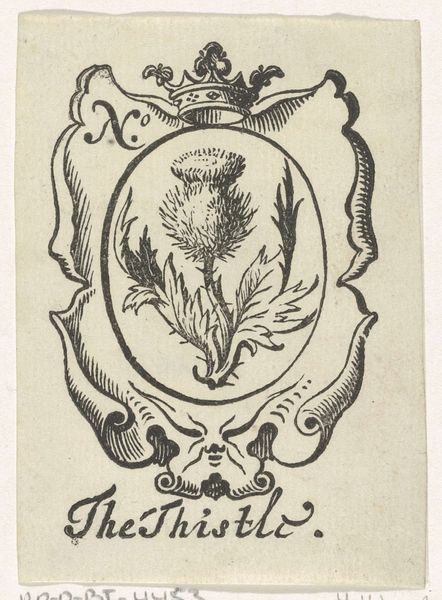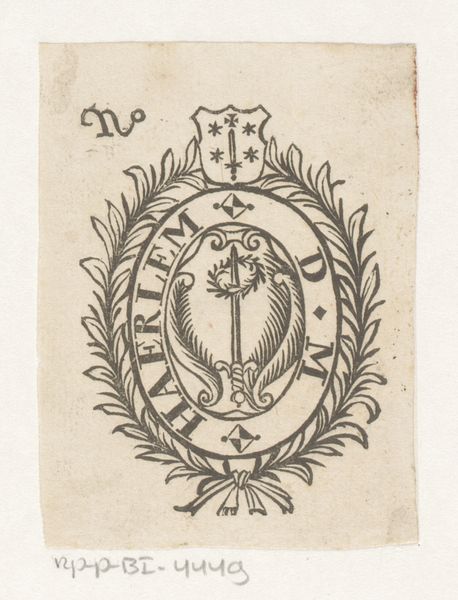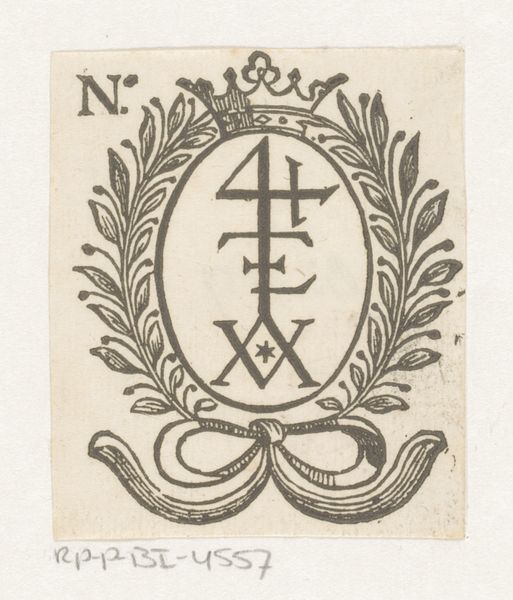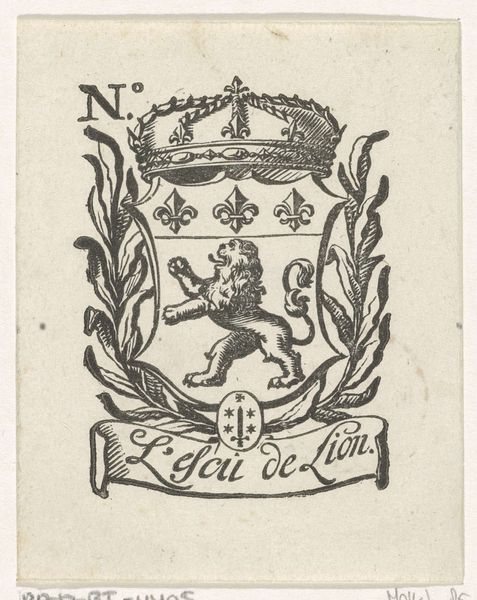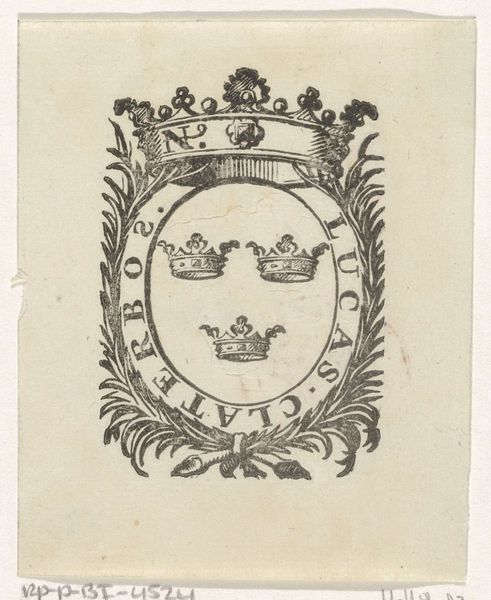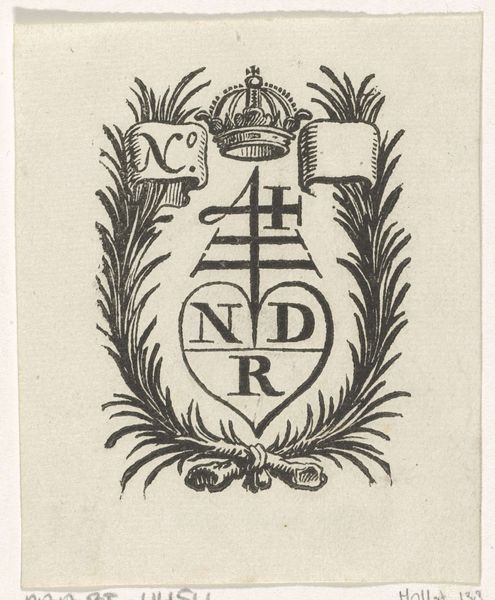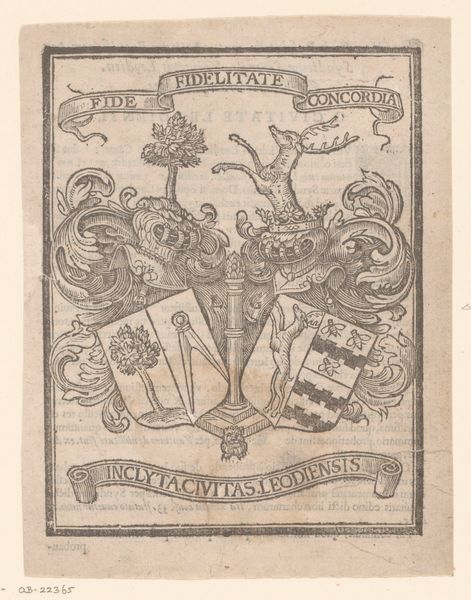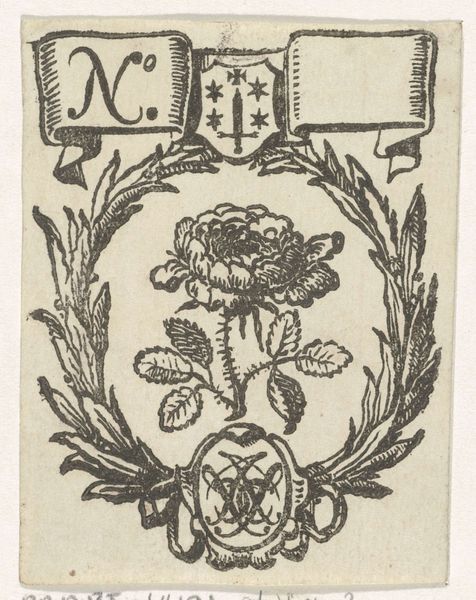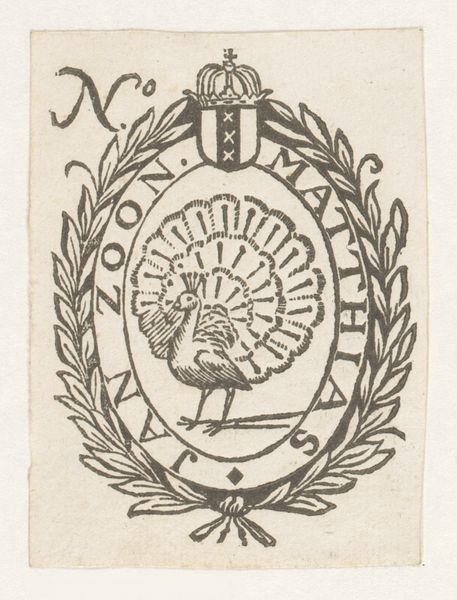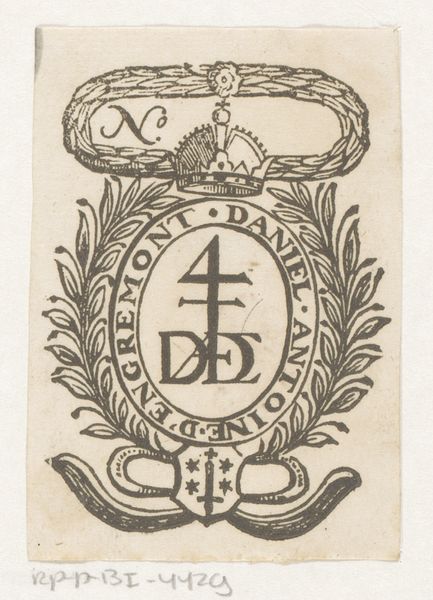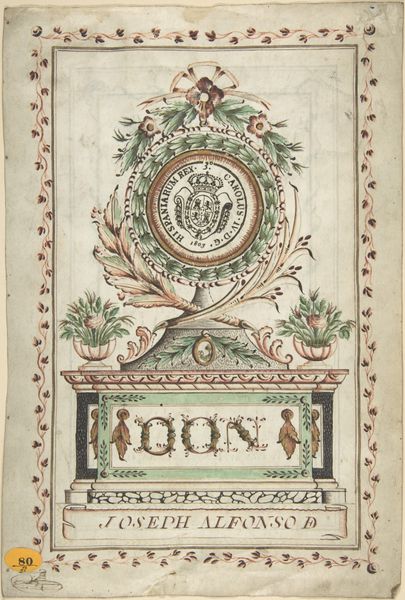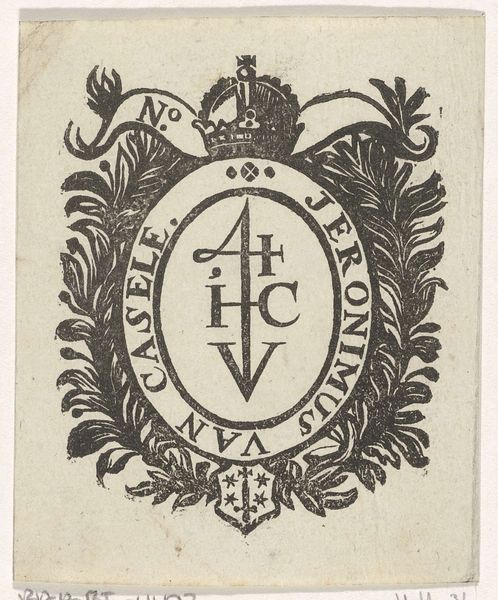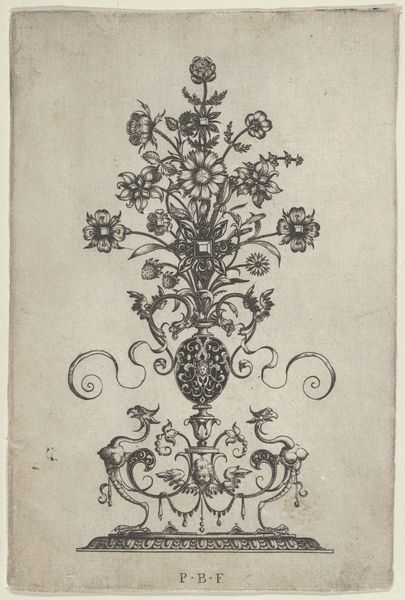
Handelsetiket met drie vlasbloemen, een kroon en het monogram WM c. 1681 - 1740
0:00
0:00
Dimensions: height 94 mm, width 71 mm
Copyright: Rijks Museum: Open Domain
Curator: Here we have a trade label crafted by Isaac Vincentsz. van der Vinne between 1681 and 1740. It's an engraving titled "Handelsetiket met drie vlasbloemen, een kroon en het monogram WM" – roughly, "Trade label with three flax flowers, a crown and the monogram WM." Editor: My initial impression is one of delicate authority. The black lines are crisp against the light paper, giving it a formal air, but the floral elements soften that quite nicely. It’s a surprisingly gentle visual statement. Curator: Absolutely. The composition, you see, hinges on this tension. The oval border neatly contains the image, providing order, while within, the flax flowers rise vertically. Notice how the crown at the apex and the monogram at the base create a clear, structured axis. Editor: And that flax itself, though seemingly simple, is hugely symbolic. During this period, flax was a major commodity, integral to linen production. The "WM" monogram likely represents the merchant's initials, essentially branding their wares. Curator: Precisely! The crown indicates quality, endorsing the linen produced with that flax. Note the fine lines used to depict the texture of the flax, creating a sense of tactile quality for the viewer, even across centuries. The technique really enhances the symbol. Editor: It's a reminder that even these small, seemingly decorative objects played a role in complex power dynamics. These aren't simply pretty flowers. This object signifies early branding, an assertion of economic influence linked to the labor, exploitation, and global trade networks of the period. Who owned this label? What power did they hold within their community and beyond? Curator: A pointed question! The engraving functions as both art and commercial artifact, and in that overlap, you start to see an interesting story about visual language and societal aspirations, and indeed, of commercial history. Editor: Precisely, this exercise in structural aesthetics underscores that objects contain layered stories reflecting cultural landscapes. Curator: And it brings a heightened sense of attentiveness as a viewer. We hope you appreciate that with your own eyes as you engage with this trade label!
Comments
No comments
Be the first to comment and join the conversation on the ultimate creative platform.
